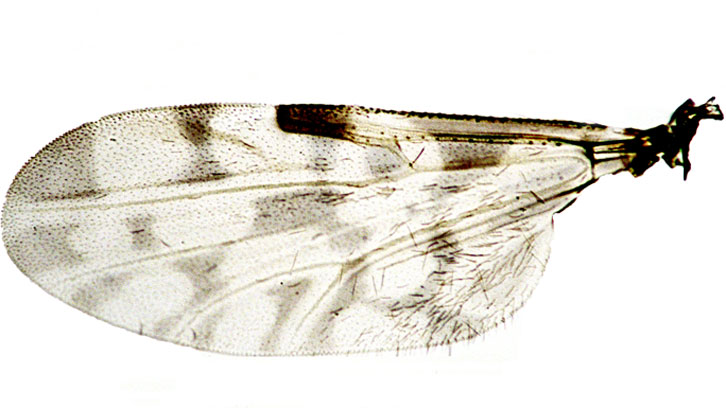Intersexuality of Culicoids Parasited by Nematodes, or How to Transform an Acrobatic Plane into a Boeing B-777

Mermithid nematodes are a family of insect parasites that can cause hosts to adapt a look halfway between a male and a female, a phenomenon known as intersexuality. In the case of the Culicoides genus, male mosquitoes parasitized by mermithids are feminised, while females parasitized suffer no apparent changes. This feminization can be a byproduct of parasite infestation, parasite adaptation or host adaptation.
When the parasite’s reproductive success depends on the characteristics of one of the host’s sexes, the parasite can adapt itself by selecting the host sex or by manipulating the host to retrieve the characters needed for its proliferation and/or transmission.
Culicoidesmales and females present marked differences in behavior and morphology, so that the feminization of males that are parasitized could be an adaptation of the parasite to recover the female midge characteristics necessary for their survival. In this case, the characteristics needed for survival need to be subject to greater selective pressure and therefore need to show a greater degree of feminization than the rest of characteristics.
In order to evaluate this hypothesis and to deepen the understanding of evolutionary processes behind the feminization of parasitized males, a detailed morphological analysis of major anatomical structures with sexual dimorphism was carried out.
The results indicate that intersex wings and antennae show a greater degree of feminization than the mouthparts, being almost identical to those of the females when size differences are not taken into account. Culicoides male and female flight behavior is very different, which is reflected in its wing morphology. While males do acrobatic flights in swarms in order to mate, females perform long-haul flights in order to disperse and find breeding sites. Culicoides breeding habitats are also the places where nematodes breed and infect new hosts. Because only female mosquitoes return to these sites, nematodes that parasitize male mosquitoes would die without leaving descendants.
In this context, natural selection acting on heritable variation has a great scope for action to produce evolutionary change. The parasite with any genetic variant that causes a degree of feminization in the host wing morphology and flying behavior will greatly increase its reproductive success, and therefore the frequency of its genes in the population will increase generation after generation.
It should be noted however, that in order to confirm this hypothesis there is a need for more efficiency and behavioral studies to corroborate that intersex specimens return to breeding sites and that nematodes parasitizing them nest and close the cycle.
References
Muñoz-Muñoz, Francesc; Ramoneda, Josep; Pagès, Nonito; Pujol, Núria; Talavera, Sandra. Is the morphology of Culicoides intersexes parasitized by mermithid nematodes a parasite adaptation? A morphometric approach to Culicoides circumscriptus (Diptera: Ceratopogonidae). Journal of Invertebrate Pathology. 2016, vol 135, p. 1–9. doi: 10.1016/j.jip.2016.01.008


